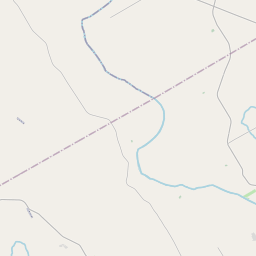John and Mary Colwick House
Historical marker location:






John Colwick and his parents came to Texas with Norwegian colonizer Cleng Peerson in 1859. Colwick married Mary Jenson in 1879, and they lived in a small home on this site. Using some materials from that dwelling, this house was constructed for them in 1889 by J. H. Nordahl. The vernacular farmhouse exhibits unusual proportions derived from traditional Norwegian forms. Its simple, elegant detailing includes Eastlake brackets on the porch.
Recorded Texas Historic Landmark - 1989
As one of the most visible programs of the Texas Historical Commission (THC), historical markers commemorate diverse topics in Texas history, including: the history and architecture of houses, commercial and public buildings, religious congregations, and military sites; events that changed the course of local and state history; and individuals who have made lasting contributions to the state, community organizations, and businesses.
In the late 19th century, Texas became known for its cattle drives, in which cowboys would move herds of cattle from Texas to railheads in Kansas and other northern states. The cattle drives were dangerous and difficult work, but they played a key role in the development of the American cattle industry.
In 1852, the Texas legislature formally established Bosque County, named after the Bosque River, which flows through the area. The county quickly developed as an agricultural hub, with settlers primarily engaged in farming and ranching. The arrival of the railroad in the late 19th century further spurred economic growth and brought increased connectivity to the area.
During the Civil War, Bosque County, like much of Texas, sided with the Confederacy. The county sent troops to fight under the Confederate banner, and the war had a significant impact on the local economy. After the war, Bosque County faced challenges in rebuilding its economy and infrastructure.
In the early 20th century, the discovery of oil and gas brought renewed prosperity to Bosque County. The oil industry brought investment and job opportunities, leading to a period of economic growth and development. Today, Bosque County is known for its scenic beauty, outdoor activities, and historical landmarks, making it a popular destination for tourists and a desirable place to live.
Bosque County Timeline
This timeline provides a glimpse into the major events and milestones that have shaped the history of Bosque County, Texas.
- 1854 - Bosque County is created and organized, named after the Bosque River.
- 1855 - Bosque County's first permanent settlement, Clifton, is established.
- 1861-1865 - During the Civil War, Bosque County supports the Confederacy.
- 1870 - The first courthouse is built in Meridian, which becomes the county seat.
- 1882 - The Waco and Northwestern Railroad is completed, boosting the county's economy.
- 1890s - Bosque County experiences an economic boom due to agriculture and the expansion of railroads.
- 1905 - Meridian becomes the first community in central Texas to have electric lights.
- 1929 - The Great Depression negatively impacts the county's economy.
- 1938 - The Civilian Conservation Corps builds Lake Whitney, a popular recreational site.
- 1940s-1950s - Bosque County's population declines due to outmigration and agricultural changes.
- 1990s - Bosque County experiences population growth and a revitalization of its downtown areas.
- 2015 - Bosque County celebrates its 160th anniversary.